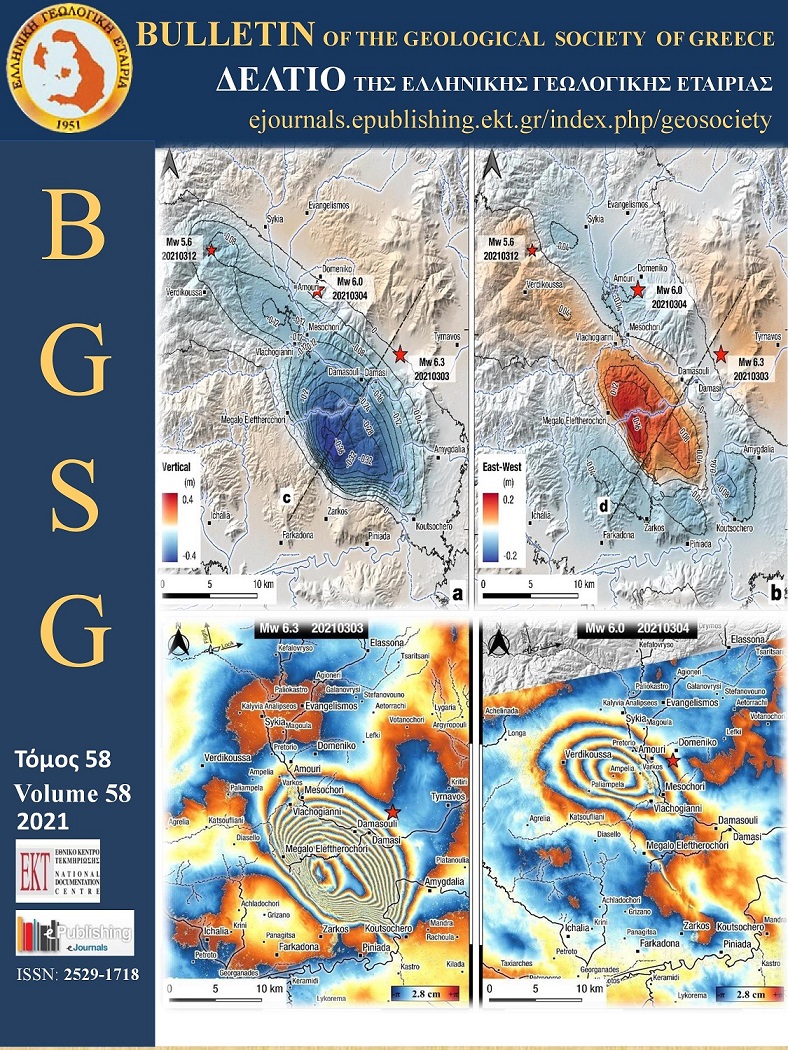The March 2021 Thessaly earthquakes and their impact through the prism of a multi-hazard approach in disaster management

Abstract
In early March 2021, when Greece was struggling with the evolving third wave of the COVID-19 pandemic with the highest numbers of daily cases and fatalities from its initiation, Thessaly was struck by a seismic sequence, which included the 3 March, Mw = 6.3 mainshock, its strongest Mw = 6.1 aftershock the following day and numerous large aftershocks. The mainshock caused extensive damage to houses and infrastructure, while the aftershock aggravated damage and caused widespread concern among residents. Based on post-event field surveys in the affected area, it is concluded that the old unreinforced houses with load-bearing masonry walls in the northeastern part of the Thessaly basin suffered the most, while the recent constructions remained intact. As a result, hundreds of homeless were in need of immediate temporary sheltering, which immediately mobilized the Civil Protection authorities to manage the emergency situation. This emergency had something unique, which made its management a challenge: the implementation of the earthquake emergency response actions was incompatible with the measures to limit the further spread of the SARS-CoV-2 virus in the community during the evolving third pandemic wave. Many of the actions have been adapted to the unprecedented conditions through a prism of a multi-hazard approach to disaster management and their impact. Among others, more and different types of emergency shelters were used to prevent overcrowding, emergency supplies distribution processes were modified to prevent transmission through hands and surfaces, places for the identification and isolation of suspected COVID-19 cases were designated in emergency shelters and extensive and regular screening testing of the local population was conducted for the detection of SARS-CoV-2 virus. From the analysis of the daily reported COVID-19 cases in the earthquake-affected area during the pre- and post- disaster periods as well as from results of rapid testing during the post-disaster period, it was found that the viral load of the earthquake-affected villages was not increased, despite the difficult and unprecedented conditions. It can be suggested that the adaptation of the measures to the new conditions has worked beneficially to reduce the spread of the new virus among those affected and the involved staff. For this reason, this approach could be considered as good practice and important lesson learned, which can be applied to similar future compound emergencies in areas with similar geoenvironmental and epidemiological characteristics.
Article Details
- How to Cite
-
Mavroulis, S., Mavrouli, M., Carydis, P., Agorastos, K., & Lekkas, E. (2021). The March 2021 Thessaly earthquakes and their impact through the prism of a multi-hazard approach in disaster management. Bulletin of the Geological Society of Greece, 58, 1–36. https://doi.org/10.12681/bgsg.26852
- Section
- Natural Hazards

This work is licensed under a Creative Commons Attribution-NonCommercial 4.0 International License.
Authors who publish with this journal agree to the following terms:
Authors retain copyright and grant the journal right of first publication with the work simultaneously licensed under a Creative Commons Attribution Non-Commercial License that allows others to share the work with an acknowledgement of the work's authorship and initial publication in this journal.
Authors are able to enter into separate, additional contractual arrangements for the non-exclusive distribution of the journal's published version of the work (e.g. post it to an institutional repository or publish it in a book), with an acknowledgement of its initial publication in this journal. Authors are permitted and encouraged to post their work online (preferably in institutional repositories or on their website) prior to and during the submission process, as it can lead to productive exchanges, as well as earlier and greater citation of published work.


